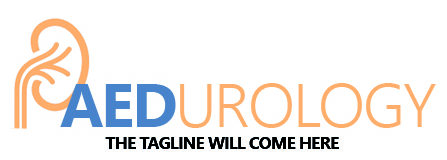The medical term for bedwetting is NOCTURNAL ENURESIS. This article will help you and your child better understand what this condition is and some of the ways to work toward dryness.
Bedwetting, also known as PRIMARY ENURESIS or NIGHTTIME INCONTINENCE, is a common condition in which a child empties his or her bladder during sleep without being aware of it. Bedwetting can be a stressful and embarrassing condition that begins in early childhood and, for some children, extends into the preteen and teenage years. Although most children remain dry through the night be age 5, about 15% of 6-year-olds wet the bed. Boys are twice as likely as girls to wet the bed. Although we don’t really know why bedwetting occurs, it is likely due to multiple factors. Heredity plays a large role; most children who wet the bed have close relatives who suffered from bedwetting as children. Small bladder capacity, too much urine production, and an inability of the body to sense that the bladder is full or emptying during sleep can contribute to bedwetting.
Children who experience primary enuresis should be reassured that wetting the bed is not their fault and will eventually stop on its own. However, an older child’s bedwetting may bring parents to the child’s health care provider to learn ways to cope with the condition/situation. Several lifestyle changes may make bedwetting less likely, such as using the bathroom at bedtime (twice) and limiting fluid intake in the hours just before sleeping. Some children benefit from the use of moisture sensors, which make a noise or vibrate when the nightclothes are first wet. The use of medications to treat bedwetting is somewhat controversial. Although there are effective drugs to treat bedwetting, the condition may return when the drugs are stopped.
In most cases, bedwetting is a natural part of childhood and does not signal a serious problem. Therefore, it is important for parents to support and reassure their child that the situation is not their fault and that it will someday stop on its own. Children should be allowed (encouraged) to change wet sheets so that they feel they are helping in some way and sharing responsibility. The mattress should be protected by plastic sheets or pads to prevent the odour of urine from remaining in the room. Siblings should be strictly forbidden to make fun of the child’s bedwetting.
It is important to discuss bedwetting with a health care provider. Although only about 1% of all bedwetting is related to a physical problem or disease, it is important to determine if your child is part of that 1%. Sometimes tests are done with older children whose bedwetting continues, to rule out physical conditions as a cause. A consultation with a paediatric urology team is most appropriate if it appears the bedwetting is due to a treatable medical condition.
Sometimes bladder and bowel retraining exercises during the day are helpful with night wetting episodes. These usually include bladder emptying every 2 hours from morning until night, along with time set aside each day for complete and adequate bowel evacuation. This is called a BLADDER AND BOWEL REGIMEN (BBR). Older children (age 7 or 8 and up) and teens respond well to moisture alarms, which wake them so that they can empty their bladder on the toilet. This program requires adult participation for the first few weeks in order to insure full awakening of the child. Continued nightly use of such an alarm will eventually train most children to sense when their bladder is beginning to empty and wake them up before they begin to urinate. After a number of weeks of dry nights, the child is usually able to discontinue the use of the alarm altogether.
When bedwetting begins suddenly after a long period of dry nights (many years), an investigation is needed since this can be a sign of infection, diabetes, bladder disorders or a reaction to a significant stressful event.
Drugs to treat bedwetting include desmopressin acetate, or DDAVP, which works by reducing the amount of urine produced during the night. It is available as a pill or nasal spray. It is given before bedtime and begins to work quickly. Although it has few side effects, DDAVP can cause water intoxication and seizures in children who drink excess water before bedtime. It is important that children who take DDAVP drink no more than the amount of fluid indicated in the prescribing instructions before they go to sleep.
Imipramine is an antidepressant that has been used for years in the treatment of bedwetting. It isn’t known exactly how it works, but it is thought to reduce the amount of urine produced, help the bladder to hold urine longer, and change the sleep cycle itself. It works best in older children and must be carefully controlled by an adult, as an accidental overdose can be fatal.
Anticholinergic drugs, such as oxybutynin and tolterodine, are used mostly in children who have daytime and night time wetting. These medications work by increasing the amount of urine the bladder can hold and reducing the bladder contractions that lead to urination. The primary side effects are facial flushing (especially in hot weather), dry mouth and constipation. When treatment of bedwetting is unsuccessful using DDAVP alone, it may be helpful to add and anticholinergic drug, since both medications work in different ways.


